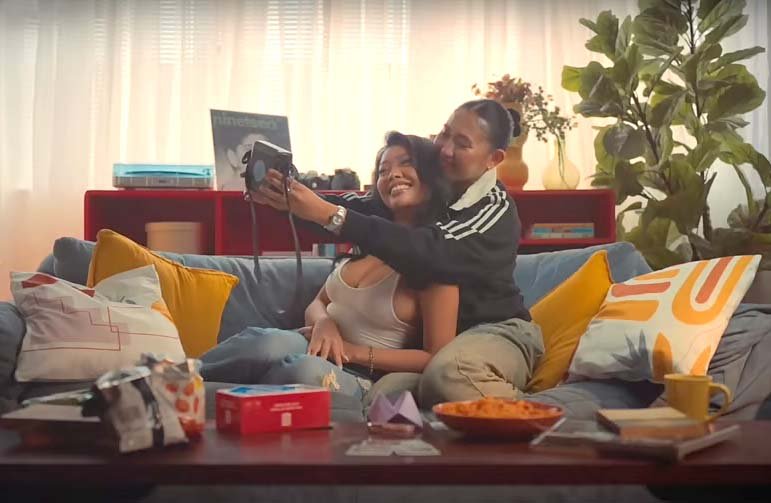Lesbians of Early-Colonial Philippines
/Pinays from the Boxer Codex
The post will talk about how a person assigned male at birth was free to become a babaylan, AKA indigenous priestess, and assume the social roles of women. In modern terms, we’d consider these people trans women. It will also likely include references to historical queer men.
That’s all wonderful, but as a (nonbinary) lesbian myself, I do often wonder where the Sapphics were. It’s a commonly known among Filipinos that we simply don’t have any records of historical lesbians and bisexual women. They’re pretty sparse and incredibly difficult to find.
Note: I will use terms such as “sapphic” and “queer” in this article, but please be aware that these modern labels and concepts weren’t used back then.
Alcina’s Account
From 1633 to 1670, the Spanish missionary and historian Francisco Ignacio Alcina lived in the islands of (mostly Eastern) Visayas. By 1668, he had completed his manuscript about the Visayans’ way of life.
He grew quite fond of the people in his chronicles collectively known as the Historias de las Islas E Indios bisayas (Stories of the Visayan Islands and Natives). But there was something he definitely wasn’t fond of: same-sex relationships among the local women.
In one of the Visayan towns, Alcina noticed that some of the women were “more zealous than the men” when it came to their female lovers. He mentioned an incident in which a woman “killed another with whom she had liaisons as if she were a man” because the other woman left her for a man.
“This is a clear indication of their excessive and unbridled passion. Other excesses could be reported elsewhere. However, I do not wish to stain this chaste paper with these ugly things,” he concluded (in Spanish).
This was written in the 1600s, so it’s not quite precolonial. However, it’s worth noting that by these very early stages of Spanish colonialism in the Philippines, the stubborn and uncooperative Visayans had driven away the Spaniards. In the 1600s, indigenous Visayan culture was still relatively untouched compared with Manila’s.
It’s clear from Alcina’s disgust that the super-traditional Spaniards didn’t approve of these sapphic relations, but we can safely say that these women’s open queerness was a feature of indigenous Visayan societies.
Thanks to my dear friend Nahia Lloren for informing me about Alcina’s chronicle. She’s also acted it out in a skit on her TikTok account.
A still from the Filipino lesbian film “Rookie”
Sapphics in Philippine Languages
The Philippines has a wealth of centuries-old indigenous languages. Some of these languages actually contain nuggets of sapphic history.
Mark of Lisbon, a historian, wrote a Bicolano-Spanish dictionary, Vocabulario de la lengua bicol (Dictionary of the Bicol Language).
Although it was published in the 1860s, well after his death, the dictionary was written sometime in the 16th century. It includes papanay, a Bicolano word meaning “a woman who sleeps with another woman as if she were a man.” (Thank you again to Nahia for sharing this info with me.)
Given that this was in the 16th century, when Spain had only just successfully established their colonial outpost in Manila, it’s evident that the word and concept are native to the Bicolanos.
In 1968, American scholar Donn V. Hart documented long-existing Cebuano terms for Sapphics. There was lakin-on for manly, corduroy-wearing, short-haired women who were not necessarily lesbians but did tend to live with female partners. Then, there was kuragaán or kuragkuragang, referring to women who were in happy, committed relationships with each other.
Giney Villar also noted in Lesbian Histories and Cultures: An Encyclopedia (2000) that one of Mindanao’s indigenous Sama-Bajau groups has words for sex acts between two women, agkul-lit or kul-lit.
A still from the sapphic song “Sugar n’ Spice” by Denise Julia
They Were Queer and Here
The colonizers’ disdain for the social and sexual freedoms that Filipino women once enjoyed is incredibly palpable in their writings. Miguel de Loarca once referred to Visayan women as “unchaste.” Other texts paint Filipino women’s passion as wicked.
In one of the Visayan towns, Alcina noticed that some of the women were “more zealous than the men” when it came to their female lovers.
Queerness is one of the crucial freedoms that the colonizers stripped away from Filipino women. When talking about our ancient ancestors’ acceptance of strong women, we ought to recognize women who love women, too.
Although relevant historical documents are hard to find, the ones available reveal that lesbians were part and parcel of our history, indigenous languages, and cultures.
Sources
● Historias de las Islas E Indios bisayas – Francisco Ignacio Alcina
● Homosexuality and Transvestism in the Philippines: The Cebuan Filipino Bayot and Lakin-on (1968)
● Lesbian Histories and Cultures: An Encyclopedia (2000)
● Vocabulario de la lengua bicol – Mark of Lisbon
Julienne Loreto (they/them) is a non-binary university student with roots in Bohol and Leyte. They are also a writer whose articles have been published in the prestigious music magazine The Line of Best Fit, as well as the Asian-American magazine JoySauce; their fiction stories have also been selected for publication by 8Letters and sold at the Manila International Book Fair.
More from Julienne Loreto





